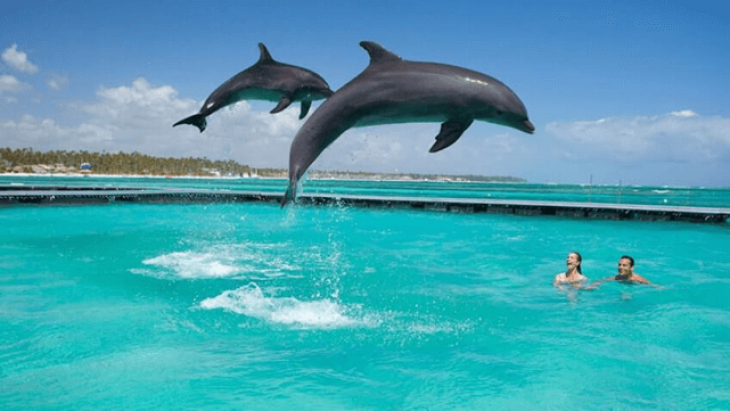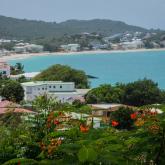
From breeching whales to giant sea turtles and prancing dolphins, a cruise offers the perfect magical opportunity to get up close and personal to some of the Caribbean’s most incredible wildlife.
The natural habitat of the Caribbean's tropical islands support migratory and native birds in a rainbow of hues while the warm sparkling waters of the Caribbean Seaare home to an array of fascinating sealife and marine creatures. Many of the big names in Caribbean cruises have taken great steps in striving to help protect the oceans and the destinations we visit by sustainably sourcing seafood, reducing carbon emissions and offering sustainable tours. Dolphin watching, birding and scuba diving are all low impact if offer by tour guides practising responsible ecotourism.

In the gin-clear waters in the Tobago Cays at the Tobago Cays Marine Park watch giant sea turtles can’t their shadows over pale sands below. You’ll also see them in Martinique, Grenada,Bequia and Barbados where it is also possible to see hawksbill or leatherback turtles in their natural environment any time of the year. Numerous close-to-shore reef systems surround Barbados, meaning the island ensures a close proximity vantage point for visitors to get closeto the turtles without causing them stress or harm.

Another wildlife highlight can be seen in the deep seas between the East Caribbean islands of St Vincent and Bequia where several species of whale, including humpbacks, sperm and pilot have been recorded between December to April each year. The migratory route is often accompanied by an escort of flying fish - a spectacular sight!
Off the coast of Grand Cayman another memorable wildlife encounter awaits - feeding Stingray in Stingray City. For decades, the shallow sandbars found off the coast of the island have witnessed a large growth in stingray population. These gentle creatures first gathered here to eat discarded pieces of food from fishing ships; over time, they have grown accustomed to snorkelers and divers feeding them by hand. Today, visitors to Grand Cayman's beaches are able to get up close to stringrays on this interactive outing - a majestic encounter.
In the “nature island” of Dominica, the lush tropical foliage hides hiking trails that weave up rugged climbs to waterfall cascades. Birdlife is plentiful and the island largely unspoilt. It is also a wonderful setting in which to spot magnificent Sperm Whales. The deep waters off the coast of Dominica provide the perfect habitat forsperm whales to breed and whale watching excursions are available to witness these mammoth, majestic creatures - you may also spot pilot whales and false killer whales, along with several types of dolphins.

St Lucia is popular for its birding as few avian experiences can top this Caribbean isle. Thick forests, wetlands and coastline are home to hummingbirds, orioles, frigate birds and the celebrated Saint Lucia parrot. Several credited eco-tourism guides provide excursions to the island’s wild spaces to discover some of the incredible 170 species found there, including at least six endemics. Wedged between the cooler climes of North and South America, St Lucia attract birds from both continents, with North American species here from October to March and visitors from South America arriving from May to September. Saint Lucia’s small size means that getting around is straightforward, so you can take in the county’s varied landscapes and tick off an impressive array of bird species in just a few days - the Saint Lucia parrot, brought back from the edge of extinction, is a highly prized spot.





